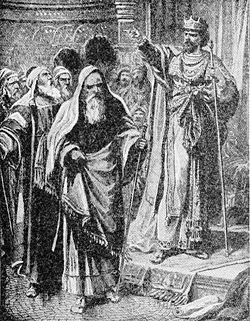Somewhere in the fifty years just past is where historians of the future will place an arbitrary line and say: “This marks the Fall of the Galactic Empire.” —Isaac Asimov, Foundation (1951)
Social commentators, historians, and philosophers are always tempted to concentrate on a particular era, usually their own, and then proclaim, Here is the water shed. Sometimes they are right for the wrong reasons, but usually they are just plain wrong. —Gary North, None Dare Call It Witchcraft (1951)
Arbitrary Lines
In the wake of the recent federal election at least one writer announced the “peaceful death” of the American republic. Dr. Ileana Johnson Pugh, a staunch enemy of Marxism, tells us with great sadness that we have “reached the point of no return…The United States of America is now relegated to the dust bin of history as a ‘has been’ empire.” What she sees ahead for us are endless years of darkness, dictatorship, and serfdom.
But drawing lines in history can be a tricky thing. Wars have first shots and peace treaties (usually), so we can with some confidence mark their beginnings and endings on a timeline. But eras defined by new ideas, inventions, or art forms often prove more difficult to place. Consider, for example, the Reformation. Did it really begin in 1517 with Luther’s 95 Theses? His theses still acknowledged the authority of the pope and the reality of purgatory, hardly Reformed doctrines. Why not draw the line six years later with Zwingli’s Sixty-Seven Theses, which rejected the papacy, purgatory, the mass, and the intercession of saints? Or how about 1536, the year John Calvin published the first edition of his Institutes of the Christian Religion? Calvin had a much wider influence than either Luther or Zwingli. And when exactly did the Reformation end?
The rise and fall of nations present us with similar difficulties. The standard history books say, for instance, that Rome fell in 476. But there are those who dispute not only the date, but the event. After all, Rome is still standing. But ignoring that, the Eastern Roman Empire survived until the fall of Constantinople in 1453. Or we might look to Charlemagne’s kingdom in the West and the later Holy Roman Empire that survived until 1806. And then there’s the Roman Catholic Church, which many—especially Protestant commentators on the Book of Daniel—see as a true extension of pagan Rome.
The Decline and Fall of Israel
Then there’s decline and fall of Israel. Israel reached the heights of its power and glory under David and Solomon. But Solomon married seven hundred pagan wives and princesses and three hundred concubines, all of whom he followed into idolatry. He built shrines for their gods on the Mount of Olives and joined in offering sacrifices and incense to their idols (1 Kings 11:1-8). Now God had told him plainly what would happen if he and his people ever went after false gods:
Then will I pluck them up by the roots out of my land which I have given them; and this house, which I have sanctified for my name, will I cast out of my sight, and will make it to be a proverb and a byword among all nations. And this house, which is high, shall be an astonishment to every one that passeth by it; so that he shall say, Why hath the LORD done thus unto this land, and unto this house? (2 Chron. 7:20-21)
Solomon’s apostasy began the judgment: God said He would rend the kingdom of Israel in two (1 Kings 11:9-13). And so, when Solomon’s son Rehoboam was ready to ascend the throne, the northern tribes balked. They demanded that Rehoboam lessen the tax burden Solomon had laid upon them (1 Kings 12). Rehoboam didn’t listen, and the northern tribes rejected his rule. They crowned Jeroboam the son of Nebat in his place.
 The Books of Kings in a Nutshell
The Books of Kings in a Nutshell
And so Israel was divided. The northern ten tribes kept the collective name “Israel.” Jeroboam immediately led them in idolatry. He set up golden calves at each end of his kingdom and told Israel, “This is the God that brought you out of Egypt” (1 Kings 12:26-23). Israel worshipped Yahweh (so they thought) under or through the image of the calf for two hundred years. Toward the middle of that time, a very wicked king, Ahab, introduced Baal worship on top of that. God raised up prophets to denounce this Canaanite idolatry and a king to destroy it. But none of Israel’s kings ever returned to the pure worship of Yahweh. All of them “walked in the sins of Jeroboam the son of Nebat, who made Israel to sin.” In the end, the Assyrians came and took the nation away (2 Kings 17).
The southern tribes of Judah and Benjamin became the kingdom of Judah. Rehoboam, too, went after idols until God used an Egyptian invasion to bring him to repentance (1 Kings 12). The Davidic dynasty continued in Judah, broken only for seven years by a usurping queen mother. Judah had good kings and bad. Toward the end, she had two remarkably good kings and, in between, one very bad king. Then the Babylonians came and carried Judah captive.
But then, within a generation—the lifetime of Daniel—came the Restoration. A reunited Israel returned to the Promised Land. Their new nation, however, was a province and not a kingdom.
The Mercy and Patience of God
Consider the profound mercy and patience of God. The northern kingdom persevered in calf worship for two hundred years. She went mad with Baal worship along the way. And yet God continued to send her prophets, including two of His greatest: Elijah and Elisha. He did this because of His covenant with Abraham, Isaac, and Jacob (2 Kings 17:13; 13:23). And even as Israel finally hurtled toward her prophesied doom, God had compassion on Israel and allowed a second Jeroboam to regain all of her lost territory and to raise to raise the nation to unprecedented prosperity (2 Kings 14:23-28). And then within a few decades, everything fell apart.
The southern kingdom played around with idolatry and foreign alliances for three hundred and fifty years. Yet towards the end, God sent two major revivals, and He rescued Judah from the armies of Assyria (2 Chron. 29—35). But in the end it was too little, too late. The godly Josiah’s untimely death brought on the downward spiral that ended in the destruction of Judah—twenty-three years later.
So when did Israel actually fall? And who but God could have predicted her end? Or her rebirth?
The Death of America?
Did America really die on November 5th, 2012? Surely there are other dates we could pick as America’s point of no return, if not, in fact, her demise. There’s 1963 when the Supreme Court expelled prayer and the Bible from the government schools. Or 1933, the year FDR stepped into office and began our hard left turn into socialism. Or 1913, the year that gave us the Federal Reserve System and federal income tax and poised us for entry into World War I. Then there’s 1861, the beginning of the Civil War that almost destroyed the nation and permanently altered the character of our government and institutions. Some have even argued for 1787, the year we ratified our Federal Constitution with its implicit (preamble) and explicit (no religious test clause) rejection of Christ and His sovereign rule over the nations. How do we define America, and how do we define death?
Conclusion
In his essay, “The Year 2000 and All That,” sociologist Robert Nisbet argues that precise historical prediction based on statistics, cycles, and current trends is pretty much impossible. When we reckon with change in human society, he says, we must also reckon with the Random Event, the Maniac, the Prophet, and the Genius.
We have absolutely no way of escaping them. The future-predictors don’t suggest that we can avoid or escape them—or ever be able to predict or forecast them. What the future-predictors, the change-analysts, and trend-tenders say in effect is that with the aid of institute resources, computers, linear programming, etc. they will deal with the kinds of change that are not the consequence of the Random Event, the Genius, the Maniac, and the Prophet. To which I can only say: there really aren’t any; not any worth looking at anyhow.
But more than that, such historical modeling can’t reckon with the mercy, patience, and surprising creativity of a sovereign God. No day in history was darker than the day Christ died, and no day was brighter than the following Sunday. We know with certainty that God honors his covenants. But predicting the future in any great detail is a rough go. We only know that Jesus wins. That’s how the whole thing ends. And that’s a pretty important piece of information.
©2012 Off the Grid News










